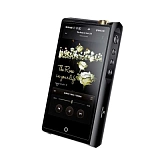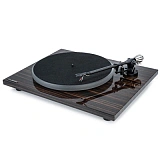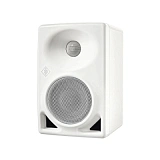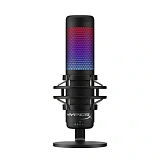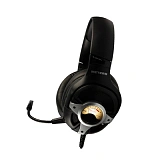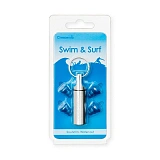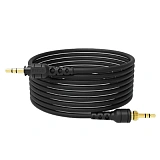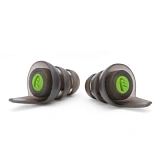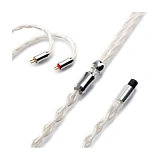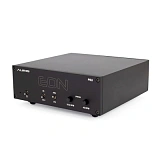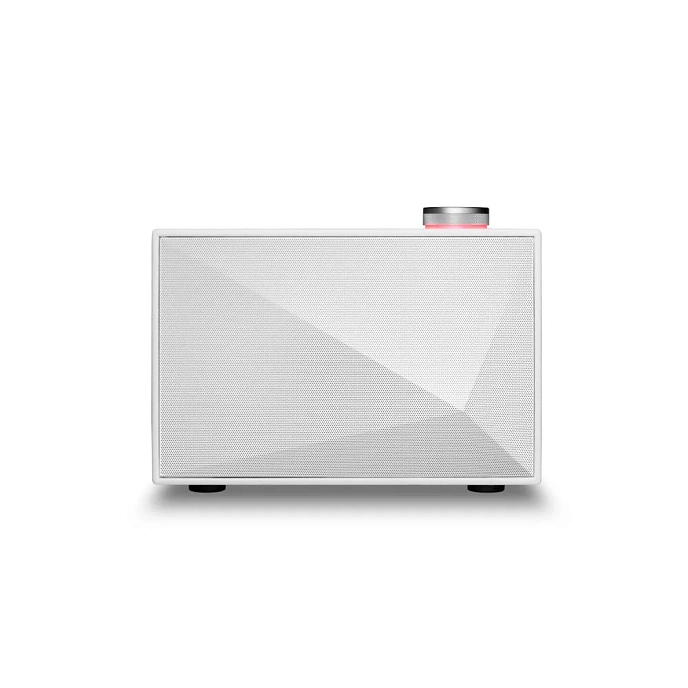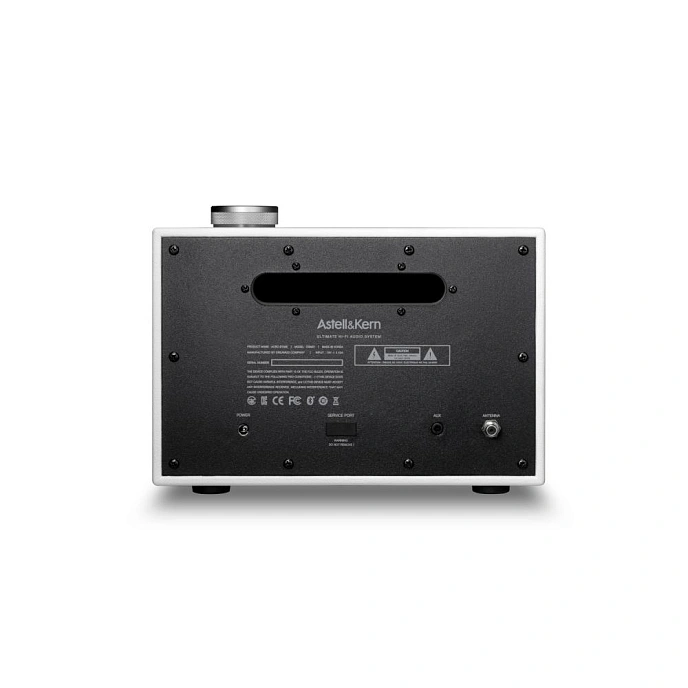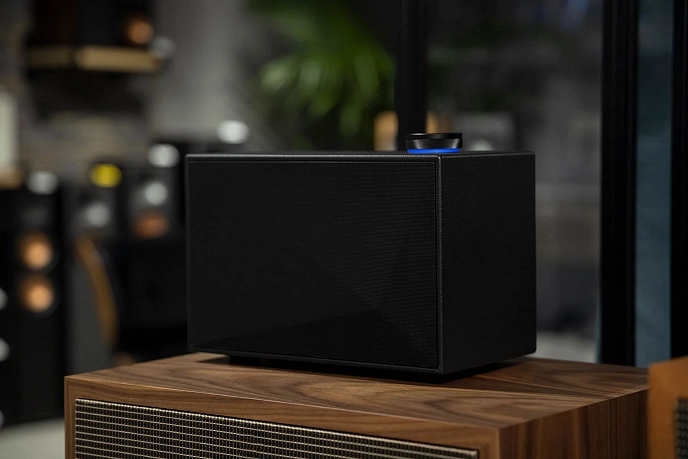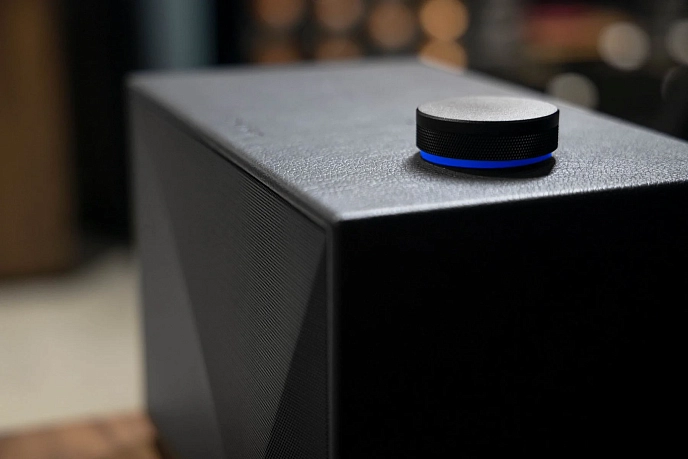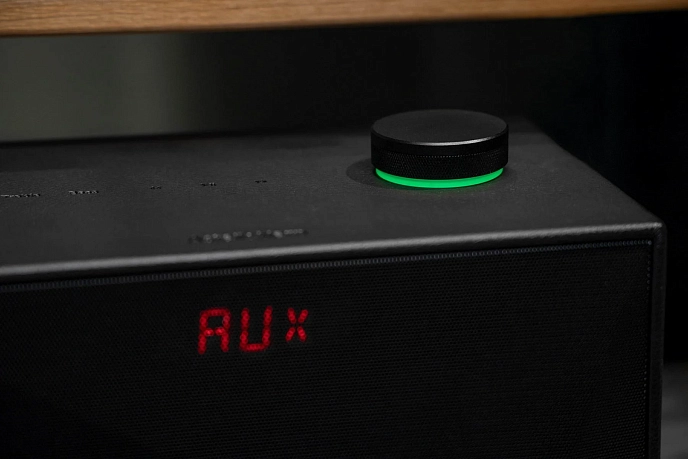The Astell&Kern ACRO BE100 is a Bluetooth speaker that combines Hi-Fi sound quality with the freedom of wireless connectivity. The speaker features a 32-bit digital-to-analog converter, custom-made drivers, and a Class D amplifier with 55W output power to fill your room with rich and clean sound. Additionally, it is the world's first Bluetooth speaker with simultaneous support for LDAC and aptX HD codecs.
The design of the ACRO BE100 is not only impressive in terms of uncompromising sound, but also bold in its aesthetics, following the brand's traditions. Light and shadow play on the asymmetric triangular facets of the grille, turning the speaker into an art piece that captures attention and enhances any interior. Premium-class metal, wood, and artificial leather harmoniously blend together, ensuring durability.
On the top panel of the ACRO BE100, there is the characteristic A&K volume wheel made of aluminum with a textured pattern, highlighting the beauty and elegance of the material. The controller provides precise and tactile volume control, as well as switches between speaker modes. The illumination of the wheel acts as an indicator, changing its color depending on the mode. Additionally, there is a hidden LED display beneath the speaker grille, which lights up when settings are adjusted.
32-bit DAC for Hi-Fi sound
Most wireless speakers do not have a dedicated DAC - they use a solution embedded in the Bluetooth chip, which limits their audio capabilities.
The ACRO BE100 uses a separate circuit with a high-quality 32-bit DAC to convert the digital signal into analog. Based on the technologies and experience that the brand has gained in creating its globally recognized portable Hi-Fi products, the BE100 provides a different level of realism, without missing out on authentic analog sound details.
Exquisite Tuned Stereo Sound
The ACRO BE100 utilizes specially selected and tuned drivers. Two 1.5-inch silk dome tweeters reproduce crystal-clear high frequencies, while a 4-inch low-frequency driver made from ultra-durable yet lightweight Kevlar fabric provides more accurate and powerful bass sound. A&K engineers tirelessly worked to find the perfect placement for the drivers, resulting in an authentic and room-filling stereophonic sound reproduction.
Unparalleled Hi-Fi Design and Astell&Kern Technologies
If speaker amplifiers are not properly designed, distortion and clipping issues can arise at high power levels.
By employing their own amplifier design technology, A&K engineers have managed to avoid such issues and achieve real Hi-Fi sound without distortions even at maximum volume. The 55W Class D amplifier produces clean and faithful sound reproduction, preventing the mixing of different frequency ranges through digital crossover. Additionally, dynamic range control (DRC) is applied to protect the speaker at maximum output power.
Furthermore, to minimize jitter (undesirable time deviation from the transmitted signal), the Bluetooth chip set is equipped with a clock generator (50 ps).
Several connection options
Engineers have adjusted the speaker's sound taking into account the technical characteristics of two different connection modes to ensure equally realistic sound for each.
For wireless music playback, the BE100 is equipped with Bluetooth 5.0 technology and broad codec support (SBC, AAC, aptX HD, and LDAC). The AUX port (3.5mm) allows for a wired connection with a player, computer, or any other audio device. You also have access to settings for adjusting the highs and lows to your personal preference.
Features:
- unique industrial design in the style of Astell&Kern
- Bluetooth 5.0
- codecs: SBC, AAC, aptX HD, LDAC
- 32-bit DAC for providing Hi-Fi sound
- stereo sound from a pair of 1.5-inch silk dome tweeters
- powerful bass from a 4-inch kevlar woofer
- high-class 55W class D amplifier
- 3.5mm AUX input
- independent high and low frequency settings
- bright LED display under the speaker grille
- aluminum volume wheel with backlight
Package Contents:
- BE100 speaker
- power adapter
- adapters for different types of sockets
- documentation




